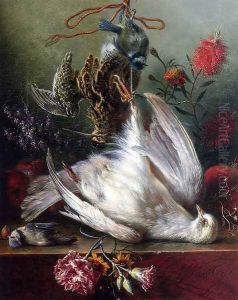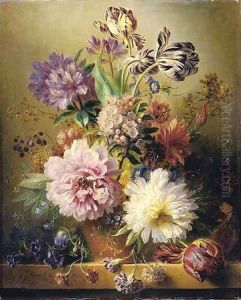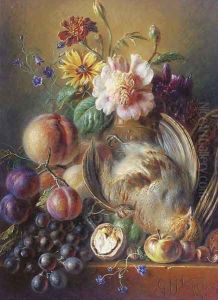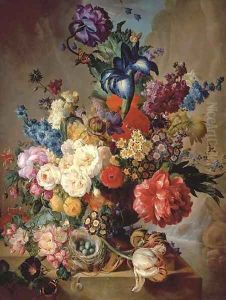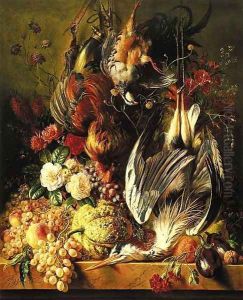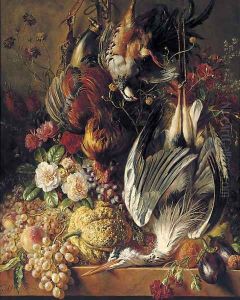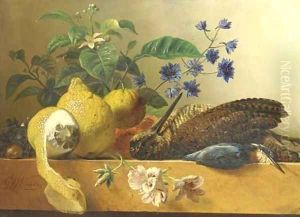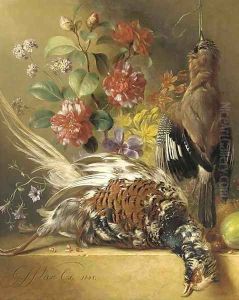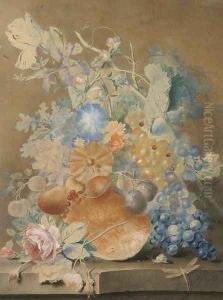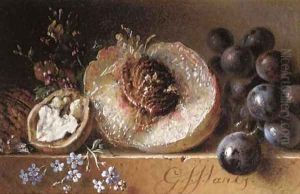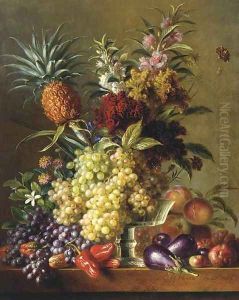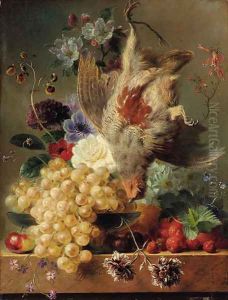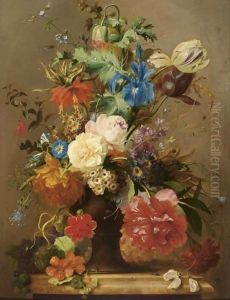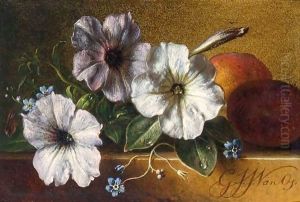George Jacobus Johannes Van Os Paintings
George Jacobus Johannes Van Os was born into a family deeply entrenched in the arts, in The Hague, Netherlands. His father, Jan van Os, was a prominent still-life painter, known for his exquisite depiction of flowers and fruits, which undoubtedly influenced George's artistic direction. His mother, Susanna de la Croix, was also an artist, further nurturing his environment with creativity and artistic expression from an early age.
Van Os's early career was marked by his apprenticeship under his father, from whom he learned the intricacies of still-life painting, a genre that he would later excel in and contribute significantly to. His initial works closely mirrored his father's style, characterized by a meticulous attention to detail and a vibrant use of color. However, as he matured as an artist, Van Os began to develop his own distinctive style, which while still rooted in the still-life tradition, incorporated a more dynamic and expressive approach.
In the early 19th century, Van Os moved to Paris, a decision that marked a significant turning point in his career. Paris, being the epicenter of the art world at the time, exposed him to new artistic trends and provided him with the opportunity to study and interact with other artists. It was during this period that Van Os's work began to gain recognition, and he became known for his exceptional still-lifes, particularly those depicting flowers and fruits. His paintings from this period are noted for their precise detail, vivid coloration, and the lively arrangement of their subjects, which often conveyed a sense of abundance and vitality.
Throughout his career, Van Os exhibited his work at various salons and exhibitions, both in Paris and in the Netherlands, earning accolades and commissions from a wide range of patrons. His ability to imbue traditional still-life compositions with a fresh and vibrant energy made his work highly sought after. Despite the changing artistic trends of his time, he remained steadfastly dedicated to the still-life genre, contributing significantly to its development and popularity during the 19th century.
George Jacobus Johannes Van Os passed away in Paris in 1861, leaving behind a legacy as one of the most accomplished still-life painters of his generation. His work continues to be celebrated for its technical skill, artistic beauty, and the unique blend of tradition and innovation that characterizes his approach to still-life painting.
